Here's What You Need to Survive a Weekend in the Woods
Camp like a champion with a packing list like ours — and what we WISH we'd brought.

Keep in mind: Price and stock could change after publish date, and we may make money from these links.
As a lifelong fan of sleeping under the stars and a former camp counselor, I’ve always felt I knew my way around the great outdoors: Why, a perfect trip to the wilderness calls for little more than a few tents, good friends and tall tales to share around the fire.

Arup Malakar
Glampers would take exception to that: In their eyes, 21st-century nature lovers cozy up in hotel-quality linens, greet the day with hot showers and celebrate hikes at chef’s tables. It’s hard to argue with those Instagrams, man. I’d be lying if I said I’ve never sighed over art-directed pictures of yurts with throw pillows and record players.

Joe Parks
This summer, my notions of what a campsite does and doesn’t need underwent a fairly spectacular test: For Ragnar Trail Tahoe, I captained a team of eight relay racers that spent a long weekend running and camping in the Sierras. Water and s’mores were provided, but it was up to us to pound out 136 unpaved miles, recover at our makeshift headquarters (pitched in the dark when we mistimed travel and arrived after sunset — whoops) and share facilities (that is, good old-fashioned portable toilets) with a few thousand new pals.
I came away from that weekend with a newfound appreciation for my tough and wonderful friends and family, a race medal that doubles as a spork — trail runners are weird — and a few field-tested revisions to my trusty list of essentials.
Our Campsite MVPs
A massive tarp. We pitched our tents around a gargantuan — think 10 feet by about 20 feet — patch of plastic I’d grabbed at the last minute from my mom’s garage. Given the dry conditions in northern California this summer, that tarp was invaluable for keeping dust under control. I returned the loaner after the trip, but I’m eyeing an upcycled vinyl billboard for future adventures.
A heavy-duty doormat. Think of an all-weather, easy-to-rinse piece of rubber (something like this Crate and Barrel version would do nicely) as a welcome mat for your campsite — and, more importantly, as a makeshift mudroom for grimy footwear.
Lightweight solar lanterns. Old-school, battery-powered lanterns are undeniably charming, but they are also both bulky and heavy. I invested in a couple of inflatable, collapsible solar lights and was thrilled with their versatility: They powered up with a few hours of afternoon sun, strapped easily to delicate tent rigging and squashed down to Frisbee-sized discs when we were ready to break camp. Deluxe versions offer USB ports for topping up devices, if you’re feeling especially fancy.
Portable power packs. Unplugging for a weekend is a lovely thing, but having enough juice to take pictures of your pals and, you know, being able to text them to say you’re running behind on a trail and haven’t been devoured by a bear is pretty great, too.
A humble spray bottle. If your corner of the great outdoors lacks bathing facilities — strike that, even if it boasts bathing facilities — a two-step personal-hygiene system is a beautiful thing. Spritz a towel with water to address the first several layers of Mother Nature’s patina, then pull out antibacterial wipes to address what you’ve missed. Your campmates will thank you.

trougnouf (Benoit Brummer)
Proper bug repellent. As both a mosquito magnet and a health writer who’s interviewed researchers on how to keep them away, I have strong feelings about insect control. I’ll spare you the case file and cut to the chase: DEET, picaridin and OLE (oil of lemon eucalyptus) are the only active ingredients that provide safe, significant and science-backed protection. (Sorry, citronella candles.) I use sprays with picaridin, as DEET has a pesky habit of damaging synthetic fabrics (like those in running gear) and plastics.
The Gear We’re Packing Next Year
A roll-up table. While balancing dinner on one’s lap could be considered a camping rite of passage, there comes a time in every outdoorsperson’s life when it’s acceptable to concede to a creature comfort or two. I’ll trade an extra eight pounds of baggage for having to rinse food out of my pants.
An extra one-person tent. Like a roll-top table, a spare tent is a bit of a packing hassle — but if you find yourself in a larger group, the privacy it offers campers who wish to turn in early, wriggle out of dirty clothes or, say, pump breast milk in private (hats off to my sister for running and camping with us shortly after giving birth to my nephew), it’s worth its weight in gold.
A screened canopy. When our team arrived in the forest, I pooh-poohed the crews fussing over campsites that looked suspiciously like tailgate parties. I then spent the next 48 hours either sweltering in the sun or spitting out moths. Going forward, I’ll throw actual shade (and swallow fewer bugs).
Garden lights. Seriously? Seriously: After dark in the Tahoe National Forest, the Milky Way is clear as day. The path to the bathroom, on the other hand, is all but invisible. The same campers who unwound beneath fancy screened canopies also staked out illuminated routes to and from their tents, and I am big enough to acknowledge their genius.
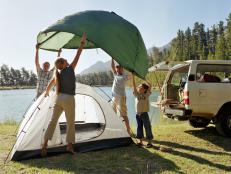
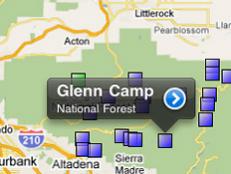
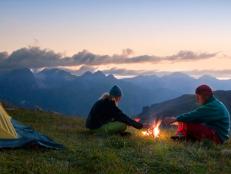

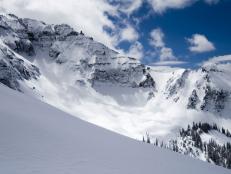
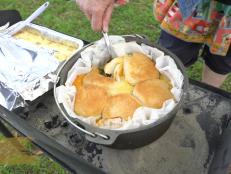

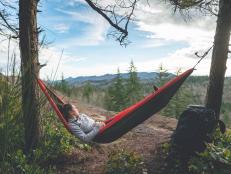
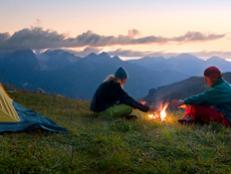
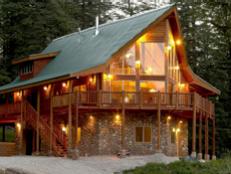

















.jpg.rend.hgtvcom.231.174.suffix/1674758726773.jpeg)










